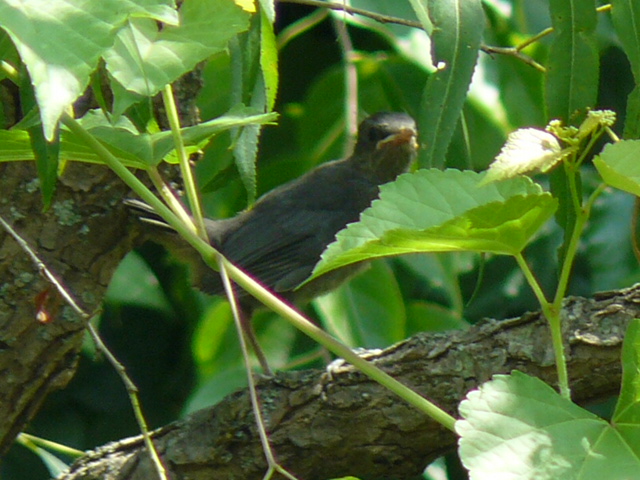So, the first field season of BBA3 (see my blog entry from June 17th) will begin winding down over the next few weeks. Sure, there are a handful of species–many of the raptors, woodpeckers, Corvids (crows and jays), wrens, several of our sparrows–that continue breeding through August, but for the vast majority of Maryland’s birds–and almost all of the long-distance migrants, nesting season occurs primarily from mid-May into late July. Those which either don’t migrate at all or migrate regionally within the U.S. can generally devote more time and energy to having multiple broods of young. However, most of the neotropical migrants (flycatchers, swallows, warblers, vireos, orioles, tanagers) have a one-and-done breeding strategy and are only here on their nesting grounds for about three months before they have to turn around for another long-distance trip.
So, by this point in the summer, most eggs have hatched, and many fledglings are already out of the nest, learning to fly, and beginning to get the gist of feeding themselves. It may not sound like it, for there’s notably less singing than just a few weeks ago, but there’s a great deal of avian activity right now–perhaps more than any other time of year. This past weekend, in fact, I took atlasing walks both Saturday and Sunday mornings and encountered recently fledged young of no less than 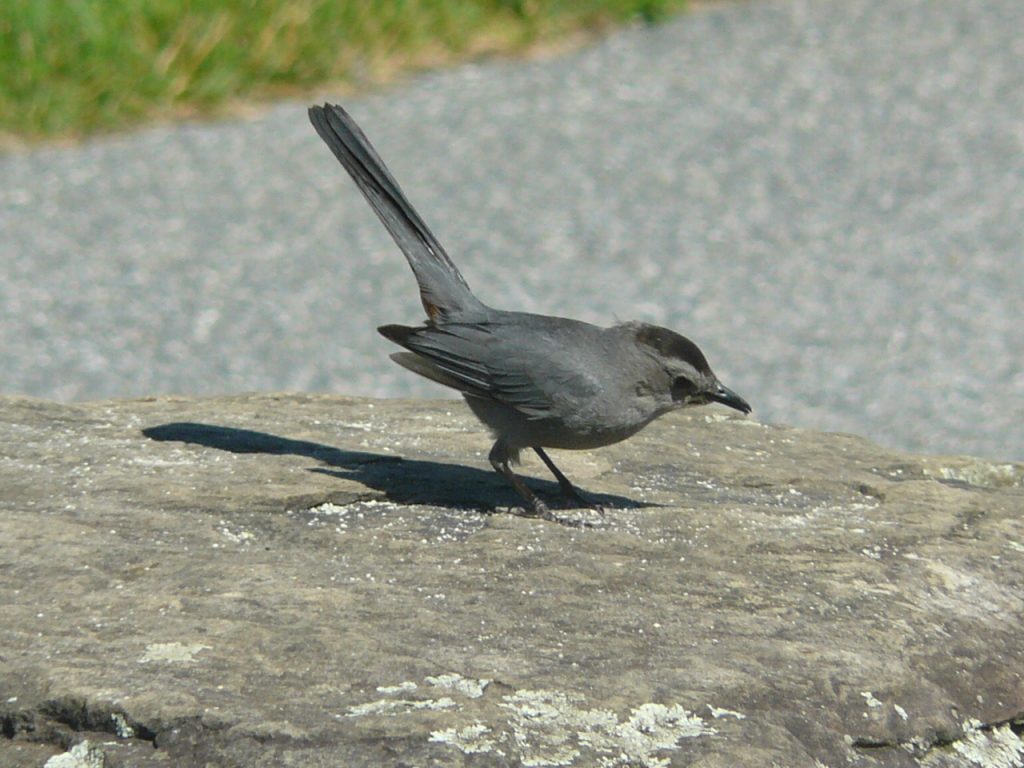 THIRTEEN different species. Of course, this included the to-be-expected robins, starlings, grackles, and the young Gray Catbird shown to the left (along with adult, for comparison.) But there were also a number of pleasant surprises–a young Red-bellied Woodpecker without a speck of red yet anywhere on its plumage, a family of five Flickers (2 adults, 3 almost-independent ‘teenagers’) all feeding in the same tree, a family of six Green Herons in a small pond, the two adults in the water while the four homely youngsters, not yet interested in feeding themselves, sunned on a nearby fallen log. When I got a bit too close to an immature Mockingbird, its agitated parent squawked loudly and bluffed a dive-bomb at my head!
THIRTEEN different species. Of course, this included the to-be-expected robins, starlings, grackles, and the young Gray Catbird shown to the left (along with adult, for comparison.) But there were also a number of pleasant surprises–a young Red-bellied Woodpecker without a speck of red yet anywhere on its plumage, a family of five Flickers (2 adults, 3 almost-independent ‘teenagers’) all feeding in the same tree, a family of six Green Herons in a small pond, the two adults in the water while the four homely youngsters, not yet interested in feeding themselves, sunned on a nearby fallen log. When I got a bit too close to an immature Mockingbird, its agitated parent squawked loudly and bluffed a dive-bomb at my head! 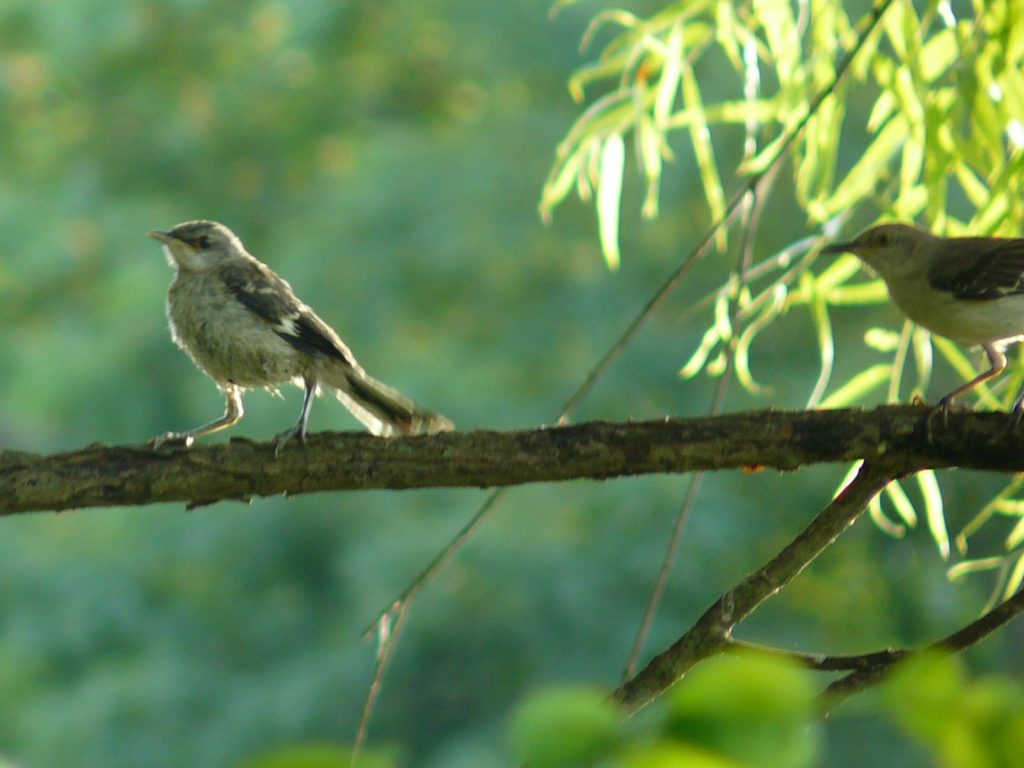 It was truly entertaining–and exhausting . . . I almost felt bad for them–watching Mom and Dad Eastern Wood-Pewee furiously sallying for insects to fill the open mouths of their three little stooges, who all huddled on the same branch, outer two facing east and middle one facing west, looking plump and eager for more. Indeed, in mid-July adult birds of all types are gathering insects and fruit as fast as they can, for they’ve got hungry mouths to feed–and those little fuzzballs can be very demanding! Fortunately for the parents, this phase is brief.
It was truly entertaining–and exhausting . . . I almost felt bad for them–watching Mom and Dad Eastern Wood-Pewee furiously sallying for insects to fill the open mouths of their three little stooges, who all huddled on the same branch, outer two facing east and middle one facing west, looking plump and eager for more. Indeed, in mid-July adult birds of all types are gathering insects and fruit as fast as they can, for they’ve got hungry mouths to feed–and those little fuzzballs can be very demanding! Fortunately for the parents, this phase is brief.
Clearly the process is slower for larger birds (like the hen Wild Turkey and three little poults which Brooks Paternotte found on our Bauer Road last week–the very first breeding confirmation of this species at Irvine!), but a typical songbird goes from being an eyes-closed, almost bald, helpless hatchling to a full-sized flight-capable independent in just a few weeks. (And we humans complain that kids grow up so fast!) However, those are the most dangerous weeks of any bird’s life. Somewhere between 60 and 80% of hatchlings never make it to adulthood. In the nest, baby birds compete aggressively for food, with smaller runts often losing out to their larger siblings. Immobile in this first phase of life, small nestlings make easy targets for predators, such as raccoons, foxes, snakes, hawks, and crows. Once they first leave the nest, young birds are at their most vulnerable, as they lack strong wing muscles and are inexperienced at flight. Their maiden voyage often ends with an awkward tumble to the ground or a crash-landing into a bush, and their inability to gain altitude in order to get anywhere fast persists for several days, making them especially easy prey. Throughout this weaning process, young birds have insatiable appetites and parents can 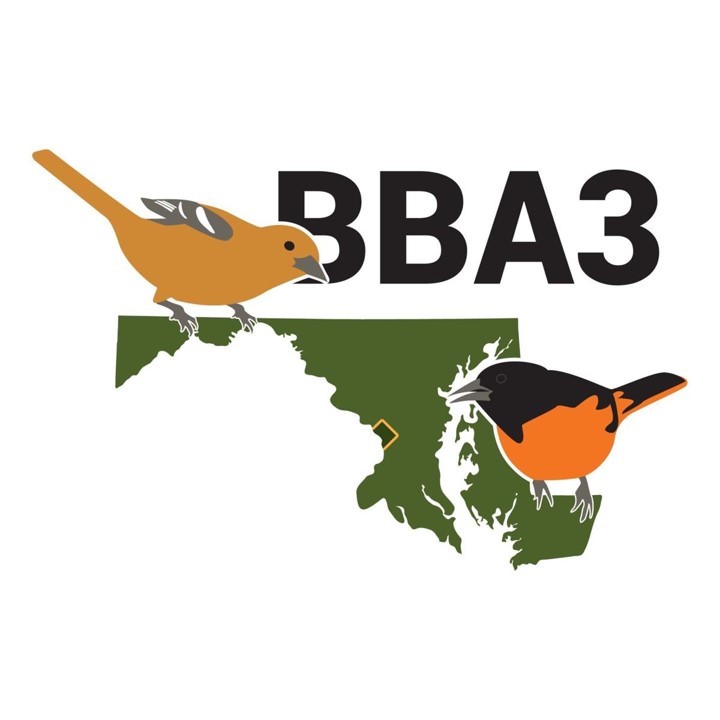 no longer worry about defending their home territory, as the ‘hunter-gatherer’ role takes up all of their time and energy. For breeding bird atlasers July brings a bonanza of breeding confirmations, which is ideal for building up the statewide database. It’s very different than the early weeks of summer, when singing males are vocally staking out nesting territories and can easily be checked off as possible breeders, but not yet confirmed.
no longer worry about defending their home territory, as the ‘hunter-gatherer’ role takes up all of their time and energy. For breeding bird atlasers July brings a bonanza of breeding confirmations, which is ideal for building up the statewide database. It’s very different than the early weeks of summer, when singing males are vocally staking out nesting territories and can easily be checked off as possible breeders, but not yet confirmed.
I already miss that chorus of early-morning bird song that welcomed each day throughout May and June. In avian society, natural selection favors males that are boldly colored and have loud and clear vocalizations, both signs of general health and fitness that females will choose as likely to pass on strong genes to viable offspring. In many species, males return for the spring a week or so prior to females, in order to vie for prime habitat–with ample food, cover, nesting materials, perches with good sight lines, all the necessities for breeding success. Once a male has selected a territory, he stakes his claim by advertising his song over and over again from various high branches around the periphery of the territory, so that his singing carries farther. There may be occasional scuffles, if another male attempts to move into a previously claimed space. For the most part, however, most newcomers will respect a strong, confident voice proclaiming that ‘This is my area and you shouldn’t even think about settling here.’ When females return to the area, some days later, they choose a mate based largely on his singing quality and also how showy a display he’s able to put on for her. If his singles ad reads, “Strong, handsome bird, sings with gusto, has a suitable territory for nesting,” it’s a done deal.
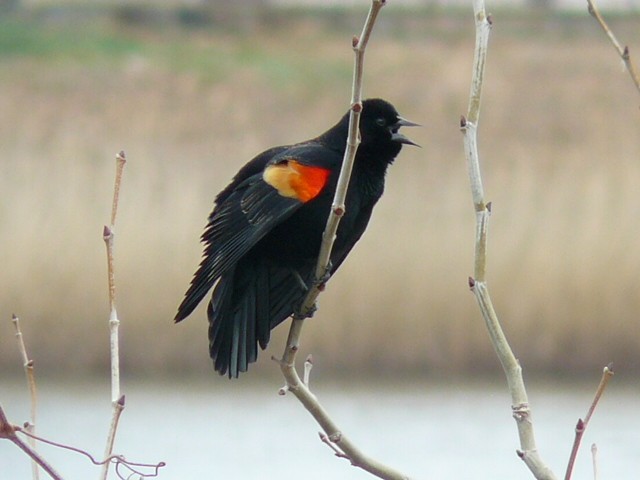
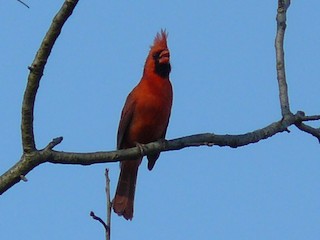
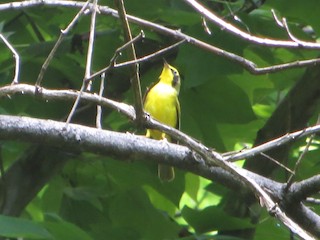
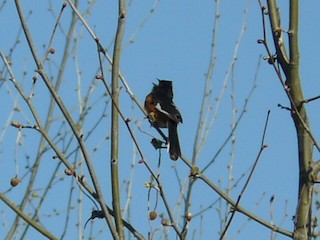
What’s mind-blowing, however, is the sheer repetitiveness with which male songbirds sing. They sing to claim a territory. They sing to defend that territory. They sing to catch the attention of females nearby. They sing to impress a potential mate whose attention has been caught. They sing to help their offspring learn how to do the same. They just throw their heads back and sing; that’s what they do. Again and again, especially in the morning, for much of the spring and the first half of summer. Ornithologists estimate that most songbirds utter their musical phrases between 1000 and 3000 times a day . . . for a couple of months. The abundant but rarely seen (because it’s small, drab olive in color, and hangs out in the highest treetops) deciduous forest songster, the Red-eyed Vireo has short song phrases, pauses only briefly between renditions, and keeps singing even in the heat of the day. As a result, it has been documented performing over 20,000 songs in a single day! What incredible lengths just to establish a territory . . . just imagine if the Land Rush of the American West required homesteaders to stake their claims by yodeling thousands of times on end!
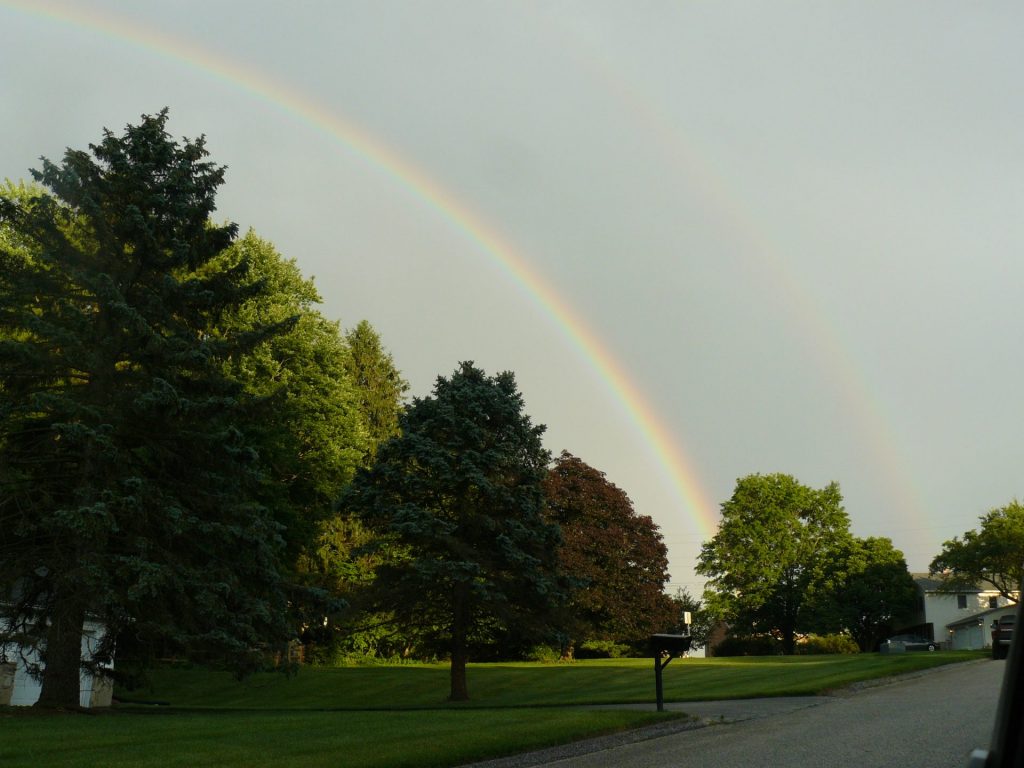 As ludicrous as that sounds, the hyper-territoriality of birds is not entirely far-fetched in human terms. Completing field work for a ‘citizen science’ project like the Breeding Bird Atlas has some interesting side benefits. Ordinarily nature enthusiasts spend the bulk of their outdoor time in various parks, sanctuaries, reserves, and other relatively undisturbed wild lands. Since the goal of the BBA is to map each species’ nesting range within the state, one’s field work is based on being assigned a particular 9 sq. mile block and scouring all habitat types within it. Many blocks have no parkland whatsoever within them, which necessitates birding along roadsides and, with permission of course, on private lands. This often means getting to know new and developed (hence, reachable by road) areas with which one may have had no prior familiarity. That’s certainly been the case with my two atlas blocks this summer. I have discovered roads I didn’t know existed, neighborhoods I’d never entered, small tucked-away woodlots, hidden ponds, all sorts of local gems heretofore unbeknownst to me. Ironically, several of my new favorites are well within a mile of my house, where I’ve lived for the past fifteen years!
As ludicrous as that sounds, the hyper-territoriality of birds is not entirely far-fetched in human terms. Completing field work for a ‘citizen science’ project like the Breeding Bird Atlas has some interesting side benefits. Ordinarily nature enthusiasts spend the bulk of their outdoor time in various parks, sanctuaries, reserves, and other relatively undisturbed wild lands. Since the goal of the BBA is to map each species’ nesting range within the state, one’s field work is based on being assigned a particular 9 sq. mile block and scouring all habitat types within it. Many blocks have no parkland whatsoever within them, which necessitates birding along roadsides and, with permission of course, on private lands. This often means getting to know new and developed (hence, reachable by road) areas with which one may have had no prior familiarity. That’s certainly been the case with my two atlas blocks this summer. I have discovered roads I didn’t know existed, neighborhoods I’d never entered, small tucked-away woodlots, hidden ponds, all sorts of local gems heretofore unbeknownst to me. Ironically, several of my new favorites are well within a mile of my house, where I’ve lived for the past fifteen years!
While I’ve thoroughly enjoyed getting to know new natural areas within my own ‘territory,’ exploring so many unfamiliar back roads between I-83 and I-795 has given me new awareness about the degree to which we humans have become overly territorial ourselves. Whether it’s simply a sign of changing times, a commentary on living near a major urban area, a reflection of the enormity of the economic disparities in our society, or a broader reflection of a general nationwide paranoia super-charged by current political leadership is anyone’s guess. Like most complex social issues, it’s likely a combination. But I have noticed more Private Property and No Trespassing signs in the past two months than I can ever recall–and more variations on that theme, as well. Private Community, No Entry, Neighborhood Watch, Video Surveillance, No Soliciting, Posted, Private Drive, Residents Only, Keep Out, Do Not Enter, Warning, Guarded by Dogs, Security Notice, This Home Protected, Trespassers will be Prosecuted, No Public Access, Entry Prohibited–I’ve seen them all, just in the past few months! It is remarkable how many different ways there are to say, “You’re Not Welcome Here” or “Stay Away From My Things” or, in essence, “I don’t trust you.”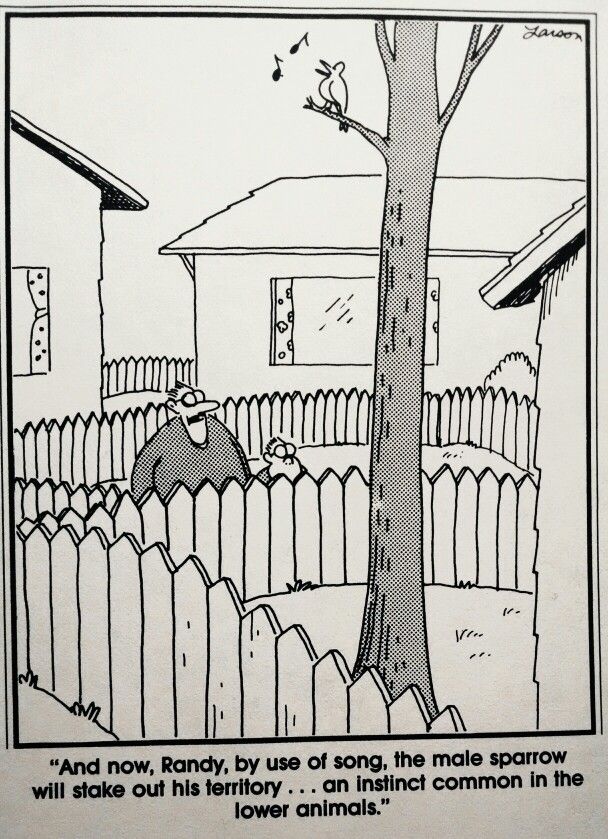
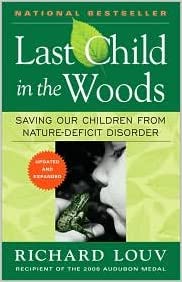 To be fair, I’m not disputing anybody’s right to privacy and, to an extent, I understand the general anxiety about potential vandalism or burglaries or worse. There is definitely a pervasive ‘bogeyman syndrome’ (for elaboration, see Richard Louv‘s Last Child in the Woods) in modern American culture, which is fueled by media sensationalism ranging from blockbuster horror movies to the nightly news. While I sort of understand these fears of the unknown and the desire to keep the unfamiliar at bay, as one who is gravely concerned about big-picture issues such as climate change, race relations, and the coronavirus pandemic, I worry about what rampant territoriality says about the future of our society and our planet. Over the past few years, our nation has done little to dispel our reputation as self-absorbed and egocentric. To cite an overused, but apt, cliché, one can’t spell A-M-E-R-I-C-A without M-E. Sadly, there’s more truth to that statement than any of us would like to admit. Our gut reaction, in far too many instances, is to worry about me, rather than we. As a country, we are making alarmingly little progress on addressing global warming, largely because we won’t acknowledge that our modern American lifestyle is one of the biggest contributors to greenhouse gases and that we need to make some real changes to curb it. We’re also too myopic to consider that our kicking the can down the road today will leave a real mess for our kids and grandkids tomorrow. Recent heightened tensions surrounding the Black Lives Matter movement have finally boiled over, because most Americans have spent a lifetime mired in an ‘us’ vs. ‘them’ mindset, without really listening or genuinely getting to know one another or allowing ourselves to feel empathy. And now, we’re practically the only country in the world who is losing the battle to COVID-19, because far too many of us (including, most shamefully, our Washington leadership) are unwilling to make the small sacrifices of social distancing, wearing masks, delaying vacations or unnecessary outings, etc., in order to keep others safe. Again, WE aren’t making the necessary progress because those sacrifices would inconvenience ME. In this ‘land of opportunity,’ where the dream is to amass wealth and possessions through individual hard work, the concerns of the collective often fall by the wayside.
To be fair, I’m not disputing anybody’s right to privacy and, to an extent, I understand the general anxiety about potential vandalism or burglaries or worse. There is definitely a pervasive ‘bogeyman syndrome’ (for elaboration, see Richard Louv‘s Last Child in the Woods) in modern American culture, which is fueled by media sensationalism ranging from blockbuster horror movies to the nightly news. While I sort of understand these fears of the unknown and the desire to keep the unfamiliar at bay, as one who is gravely concerned about big-picture issues such as climate change, race relations, and the coronavirus pandemic, I worry about what rampant territoriality says about the future of our society and our planet. Over the past few years, our nation has done little to dispel our reputation as self-absorbed and egocentric. To cite an overused, but apt, cliché, one can’t spell A-M-E-R-I-C-A without M-E. Sadly, there’s more truth to that statement than any of us would like to admit. Our gut reaction, in far too many instances, is to worry about me, rather than we. As a country, we are making alarmingly little progress on addressing global warming, largely because we won’t acknowledge that our modern American lifestyle is one of the biggest contributors to greenhouse gases and that we need to make some real changes to curb it. We’re also too myopic to consider that our kicking the can down the road today will leave a real mess for our kids and grandkids tomorrow. Recent heightened tensions surrounding the Black Lives Matter movement have finally boiled over, because most Americans have spent a lifetime mired in an ‘us’ vs. ‘them’ mindset, without really listening or genuinely getting to know one another or allowing ourselves to feel empathy. And now, we’re practically the only country in the world who is losing the battle to COVID-19, because far too many of us (including, most shamefully, our Washington leadership) are unwilling to make the small sacrifices of social distancing, wearing masks, delaying vacations or unnecessary outings, etc., in order to keep others safe. Again, WE aren’t making the necessary progress because those sacrifices would inconvenience ME. In this ‘land of opportunity,’ where the dream is to amass wealth and possessions through individual hard work, the concerns of the collective often fall by the wayside.
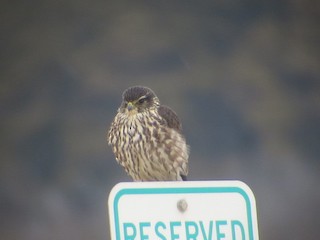
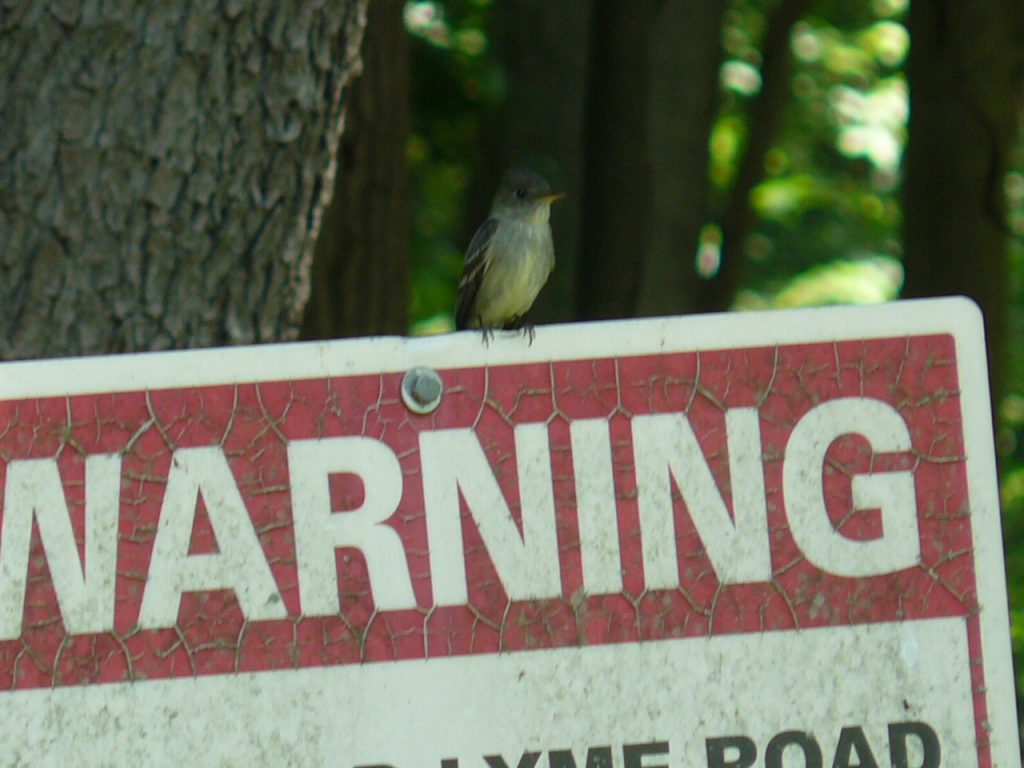
What does all of this have to do with the growing number of Private Property signs in our neighborhoods? To me, anyway, those signs suggest that, yet again, we’re missing the big picture. We’re all in this together, and right now we have an urgent need to save a distressed planet. It’s not about your land or my property; it’s about OUR Earth! (And OUR Community. And OUR Health.) And we’re not guarding it from some unknown ‘other’; we’re saving it from ourselves! If one’s primary focus is to put up signs and cameras and motion-sensitive lights in order to protect one’s own yard and home from some hypothetical–and extremely unlikely–human threat lurking in the shadows somewhere, that, in my opinion, is myopic. It perpetuates the ‘us’ vs. ‘them’ narrative. It continues to promote suspicion of one another. It focuses on individual needs, not societal ones. Why throw so much time and energy into conserving and protecting one’s own small territory while rampant pollution, institutional racism, and ignorant health practices are slowly destroying everything around it? The global community needs your help. Territoriality, after all, is for bird-brains. –BR
